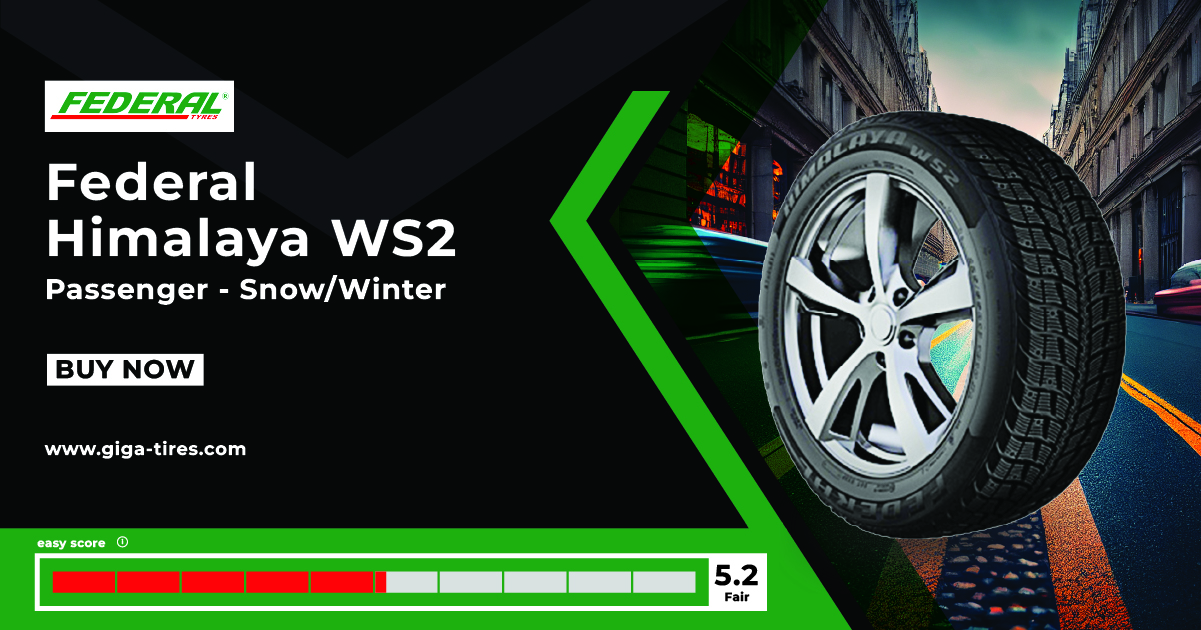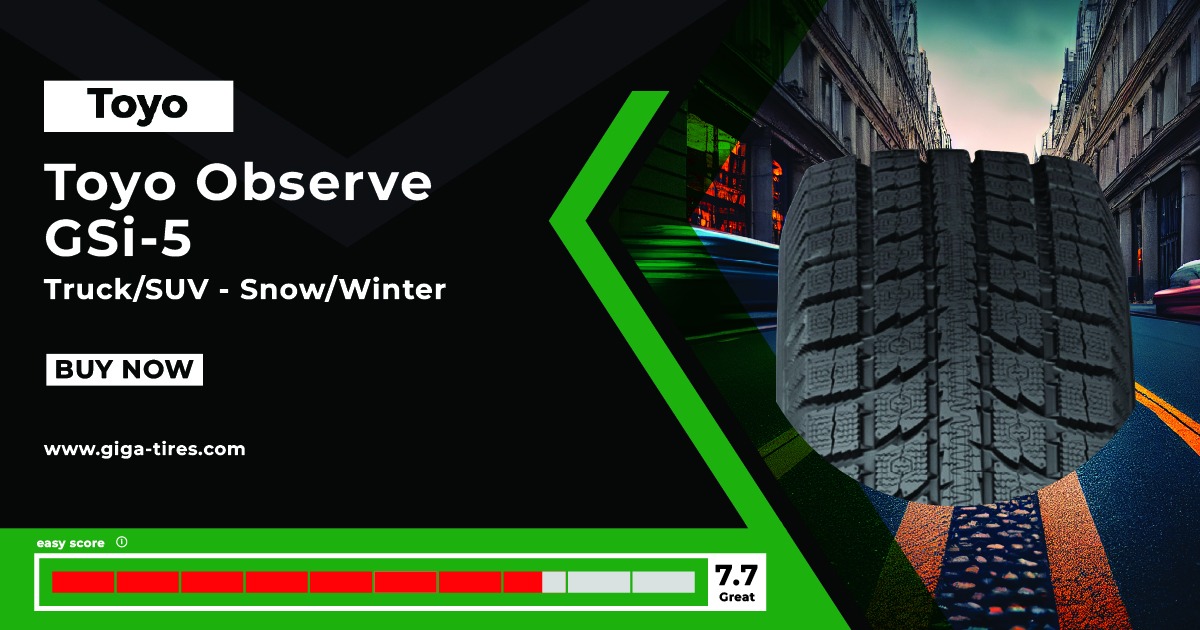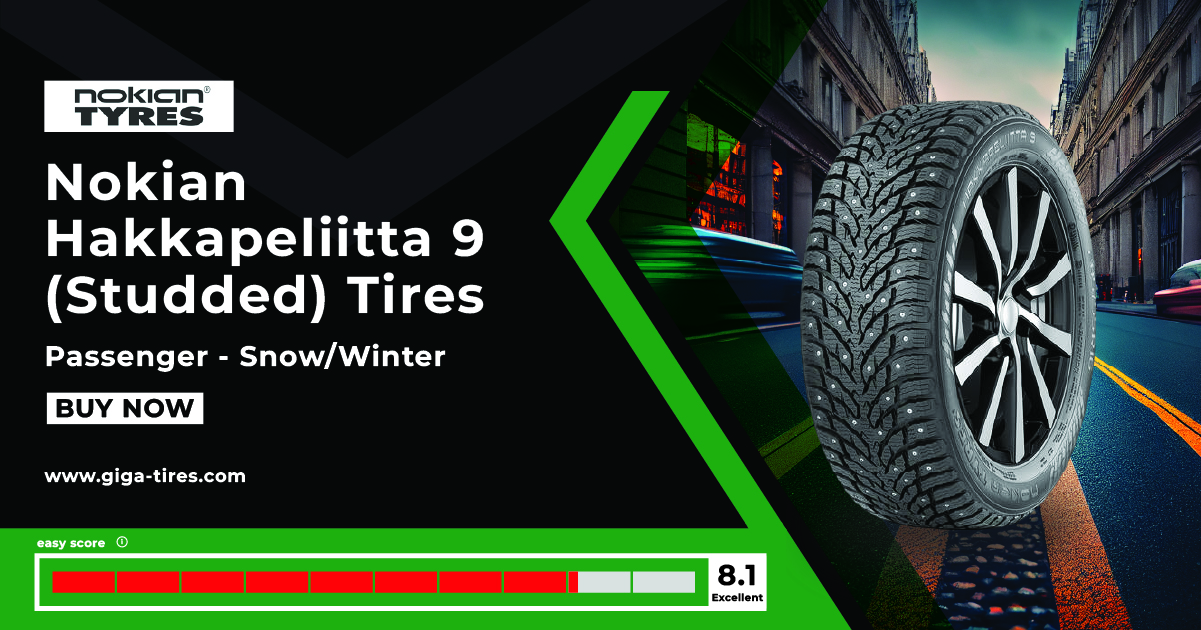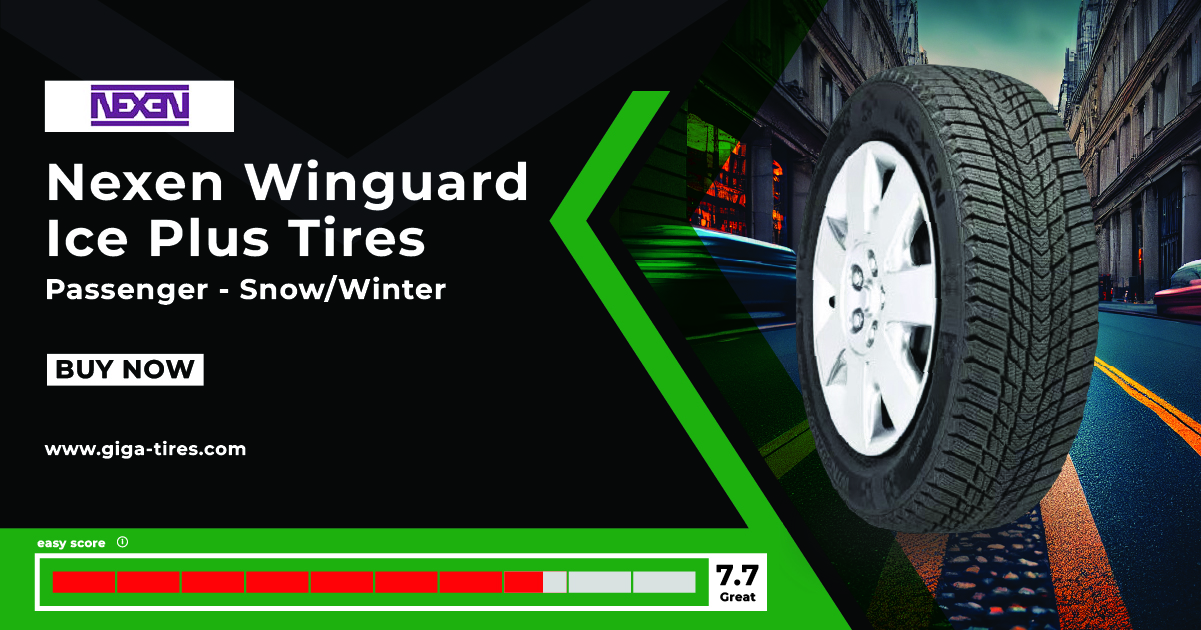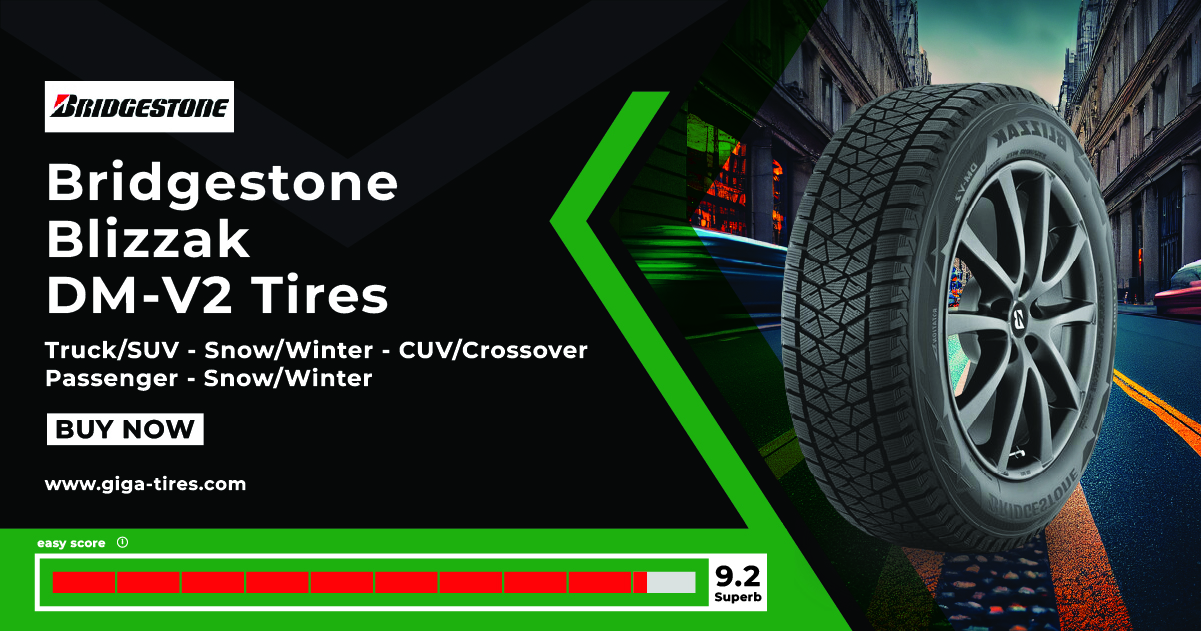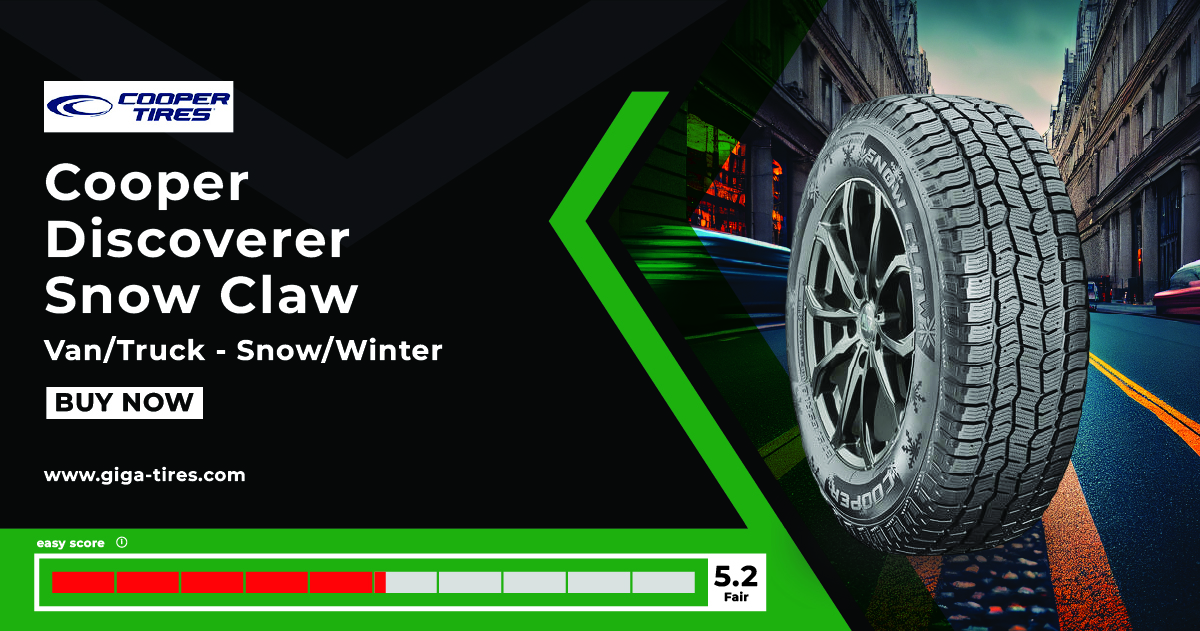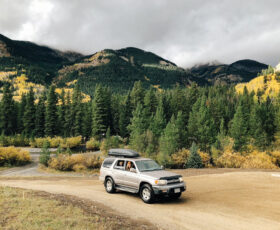Last Updated on 4 months
Navigating the Cold: Your Guide to Answering Frequently Asked Questions About Winter Tire Purchases
Driving in the winter can be treacherous – if you don’t have the right tires on your vehicle. Every year in the United States, 76,000 people are injured, and 700 die from car accidents caused by snowy or icy roads. Additionally, over 70% of the population lives in areas that report annual snowfall. But buying winter tires is something many people must consider.
However, there are several essential things to know when buying winter tires to ensure you get the best style and deal for your vehicle. In this post, we want to answer the most frequently asked questions we see about buying winter tires.
> What Makes Winter Tires Unique?
Winter tires are designed to provide a better grip on snowy and icy road surfaces than summer or all-season tires.
These tires are designed with tread block patterns that optimize the biting edges and have high-density sipes to enhance the tires’ grip.
The sipes run across the tread and are positioned to enhance control and forward motion. The tires stay flexible in freezing temperatures, which allows the sipes to open as they roll so the two edges can bite into the snow/ice for better traction.
These edges are generally constructed in a zig-zag pattern with angles that oppose the tread pattern for added grip. The tread design also works with wide grooves that evacuate snow and slush quickly to stabilize the vehicle.
> When Should I Get Winter Tires?
If you are looking for the best deal when buying winter tires, it is recommended that you buy them off-season. If you wait until winter approaches, inventory may be limited, as many people will run out to buy winter tires themselves.
Instead, consider purchasing winter tires in the early fall when new models arrive in stores, when rebates are often offered, or wait until spring to get discounted prices on tires to use for the following winter.
> What’s the Difference Between Winter Tires and All-Season Tires?
All-season tires are often sold as an option for year-round driving.
They are designed to provide a comfortable ride in all kinds of weather, from heat and rain to light snow and mild cold.
However, all-season tires will not provide the same level of safety as winter tires in severe winter weather or on icy roads. All-season tires are not made with a rubber compound that adapts to sub-zero temperatures. The tread pattern is also designed to handle all kinds of weather (not extreme winter specifically), so the tread patterns will not cut through thick snow or slush with as much stability and effectiveness.
The same goes when comparing winter tires to all-terrain tires.
Although all-terrain models may be rated for driving in heavy snow and wintry conditions, they are not explicitly designed for this purpose. Therefore, they will not optimize your grip, traction, or handling like winter tires.
> What are the Benefits of Winter Tires?
There are numerous benefits to buying winter tires, but the most important one is improved safety in winter conditions. Studies have concluded that vehicles with winter tires are less likely to get into car accidents. Eighty percent of respondents agreed they had avoided a potentially hazardous accident due to their winter tires.
Winter tires are designed to improve handling on snowy, icy, or slushy roads. This makes driving, braking, and turning safely easier without spinning out or hydroplaning.
Another significant benefit is that winter tires can extend the life and use of your other tires. Harsh winter weather can wear down all-season or all-terrain tires quickly. Because these tires become more rigid in winter, their tread wear increases significantly over the more flexible ones. By switching out winter tires, you can protect your other tires by using them only for a portion of the year when appropriate.
> Do I Need All Four Winter Tires, or Will Two Work?
You may wonder how many snow tires I need – and if installing only two rather than all four is possible.
You must install four matching winter tires to achieve the most significant benefits. If you only put on two winter tires, you will have an imbalance in your vehicle that could be dangerous. You may even lose control of one of the axles, which could lead to an accident.
> When is the Ideal Time to Switch Over to Winter Tires?
It might seem like the best time to install winter tires would be after the first snowfall – or at least once the winter season begins. However, winter tires are designed to ensure safer driving in much more than just snow and ice. They are designed to improve the vehicle’s grip on the road in cold temperatures.
Non-winter tires will become stiffer when temperatures dip below 45°. The rubber may become more brittle and lose grip on cold surfaces like cement or asphalt. If you drive res in summer in cold temperatures, your car may spin out or slide. Colder temperatures can lead to cracks in the tires over time and make them wear down much faster.
Winter tires are designed to stay softer in cold weather, so the tire will still grip on the road. So, it is highly recommended that you switch to winter tires as soon as the temperatures drop.
> What Temperature is Bad for Winter Tires?
Winter tires are not designed to drive during high heat, so it is best to switch them out once temperatures warm up. You likely won’t be at any safety risks using your winter tires in the spring or summer months. However, they will wear down quickly and compromise your fuel economy.
There is no set temperature that which winter tires should not be in, but they are built for optimal performance at 45°F and below. If the weather is consistently above 45°F, switching out your winter tires for all-season, summer, or all-terrain models is best.
So, if you are wondering when to remove winter tires, the best answer is once temperatures are consistently above 45°F.
> What are Studded Winter Tires?
Studded winter tires have small metal, rubber, or plastic studs that stick out slightly from the tread. These studs dig into packed snow or ice beneath, giving the tire a firmer grip. It should be noted that many states have laws limiting the use of metal-studded tires, as they can damage the road beneath.
> What are Studdable Winter Tires?
Studdable winter tires have small tread pinholes, allowing you to add or remove studs as needed. This gives drivers some flexibility if they live in an area that gets heavy ice occasionally. Switching the studs in and out can be time-consuming as each tire has up to 100 studs.
> What are Non-Studded Winter Tires?
Non-studded or just winter tires are designed to improve grip and traction on snow or ice without using studs. These tires are built with optimized tread patterns and high-density siping for extra grip. They are made with specialized rubber compounds that allow the tire to stay flexible in cold and freezing temperatures.
> Should I study my Winter Tires?
Studded winter tires can make driving safer and easier on highly icy roads. According to the Department of Transportation, studded tires have a 15% shorter braking distance on ice and snow than non-studded winter tires.
As mentioned, some states restrict when studded tires are allowed on the roads. You should check with your local legislation before buying winter tires with studs.
> What does the Three-Peak Mountain Snowflake Symbol Mean?
Many winter tires have a Three-Peak Mountain Snowflake symbol on the side of the tire.
This rating shows that the Rubber Manufacturers’ Association approves the tires meeting the minimum requirements for severe snow service. These tires provide superior winter performance and traction on heavy snow and ice to increase safety compared to tires without this rating.
> Should I Fill My Tires with Nitrogen in Winter?
While most tires are filled with oxygen, you can fill them with nitrogen.
Nitrogen costs a bit more, but there are some benefits to using nitrogen for filling winter tires. First, nitrogen helps to maintain internal tire pressure in cold weather and handles lower temperatures better than oxygen. However, the difference in pressure maintenance is only slightly higher than oxygen, so this is not a requirement for winter tires.
> Are Winter Tires Expensive?
Generally, winter tires will be the same or slightly more expensive than other tires. However, looking at winter tires as an investment is essential for your wallet and safety. If you use all-season tires during the warm months and winter tires in the cold months, you won’t have to replace them as often, as they are not seeing constant use.
Moreover, winter tires will save you from car accidents in cold weather. And repairs are significantly more expensive than a set of tires.
As with any tire, you can find various prices based on the company’s quality and design. However, a lower price does not necessarily mean a lower rate. You can find some great winter tires that fit any budget at affordable prices.
> How Should I Store Winter Tires?
You can store winter tires with or without rims – but having separate rims for winter tires can help them last longer and save you the cost of remounting them every season. It not only makes it much easier to remove and reinstall the tires but also helps keep the tire’s shape and protect it from damage during storage.
You should also clean and dry your winter tires before storing them upright or vertically instead of horizontally. Do not keep your tires in an area that gets direct sunlight, as this can dry out and crack the rubber. You may also want to purchase a covering to remove dust and dirt.
> How Long Do Winter Tires Last on Average?
If you take good care of your winter tires by keeping them inflated and storing them correctly, they can last up to four or five seasons. However, winter tires aren’t built for long mileage, and the compounds lose integrity each winter. Severe weather or rough roads will wear down winter tires faster.
You should replace the tire if you notice the rubber compound cracking, fl, flaking, or uneven tread wear. Any damage or extreme wear can impact a winter tire’s ability to grip the road, so you only want to use tires in good shape.
> Can I Leave My Snow Tires on All Year?
No, it would be best if you did not leave your winter tires on your vehicle year-round.
Winter tires are not made for driving in hot or cold weather conditions. Using them on hot summer roads will wear them quickly and compromise your vehicle’s performance. Instead, only use them once the temperature drops and snow is expected.
> Should I Buy Steel or Alloy Wheels?
Both steel and alloy wheels are rated for winter driving. However, alloy wheels are a bit lighter in weight, which can help improve the vehicle’s fuel economy. Steel wheels, on the other hand, are more robust and heavier. This makes them better for driving in extreme winter conditions, such as off-roading through thick snow.
> How Fast Can I Drive with Winter Tires?
Winter tires will have a speed rating, usually displayed as a single letter. The most common speed ratings for winter tires are:
• L: 75 mph
• Q: 9 mph
• R: 106 mph
• S: 112 mph
• T: 118 mph
However, just because a winter tire is rated for high speeds does not mean it is the safest to drive at this limit. Winter roads can be hazardous, and you must consider the safety of the cars around you.
> How Much Does a Set of Winter Tires Cost?
Many wonder why winter tires are necessary due to the added cost of purchasing them and all-season, summer, or all-terrain tires. However, you can find a set of winter tires that fit into virtually any budget.
Generally, a moderate set of four winter tires will range between $160 $250. Tires may also be purchased individually or as a set.
> What are the Best Winter Tires?
If you are looking for top-quality winter tires that will fit your vehicle (and budget constraints), we recommend some models at Giga Tires.
Passenger Car Winter Tires
Federal Himalaya WS2
Federal Himalaya tires are studdable snow tires designed for ultimate cold handling. Their specially designed rubber compound stays grippy and flexible, helping to improve stability and traction. The tire’s wide ribs and grooves propel out slush, water, and snow to keep the tires safely gripped to the road.
This stable passenger winter tire starts at $45 per tire.
Toyo Observe GSi-5
This passenger winter tire comes with the latest design technology on the market. The unique compound includes carbonic powder to absorb moisture and improve grip. The cutting-edge design supports safe braking and smooth turns on icy roads. It also features a unique rib design to expel slush and snow from the tread, and it is M&S-certified for severe snow service.
The Toyo Observe GSi-5 can be purchased for as low as $48 per tire.
Nokian Hakkapeliitta 9 Studded
This studded winter tire provides high-rated traction on snowy and icy roads and leads in numerous performance tests. It is also designed with open grooves and biting edges for excellent traction with a soft, pliable compound for added grip.
This studded snow tire is available for $191 per tire.
Nexen Winguard Ice SUV Tires
If you’re looking for the ultimate performance in a winter tire, the studded Nexen Winguard Ice Tires are the best choice. This tire has a V-shaped directional tread and zig-zag grooves to expel water. The center rib block design supports stability and handling on slippery roads for a safe, smooth ride.
Bridgestone Blizzak DM-V2 Tires
This winter and snow tire is unique because it is a hybrid of an all-season and winter tire – meaning you can use it all year. Thanks to its unique design, it is designed for ultimate safety on slick, wet roads. Bridgestone uses NanoPro Tech Multi-cell compound technology, which stays highly flexible and soft in cold temperatures and keeps the tires dry on snow and ice.
You can purchase the Bridgestone Blizzak DM-V2 tire for as low as $96 each.
Cooper Discoverer Snow Claw Tires
This studdable tire features Snow Groove technology designed to improve the tire’s handling, braking, and overall performance in thick snow. It has a Three-Peak Mountain Snowflake rating, meaning that it is certified for severe snow and winter driving. It also has rigid central ribs and longitudinal grooves to reduce hydroplaning and boost the tire’s grip on slippery roads.
This highly rated studdable winter tire starts at $135 per tire.
Conclusion
Winter tires can give you peace of mind to drive safely on snowy, icy roads. The important thing is to find winter tires designed to fit your vehicle and provide you with all the features you need based on your driving style and location.
At Giga Tires, we know many options available in the market for snow and winter tires. We are here to help you narrow your options and find great tires at an even better price. We also offer numerous rebate deals for a great price on the market’s highest-rated tires.
You can contact our team by phone, email, or social media to learn more about the winter tires we offer and find the best brand, model, and design that meets your needs.
Keep the tire knowledge rolling! Visit Giga Tires’ website for many articles that will boost your understanding.
- Passenger Tires: Which Quality Low-Cost Passenger Tires Should You Buy?
- Cheap Truck Tires: Your Ultimate Buyer Guide
- The Best Mud Tires: Top Picks For Off-Road Adventures
FAQs
What is the purpose of winter tires?
Winter tires, also known as snow tires, are specially designed to provide better traction and handling in cold weather conditions, particularly on icy, snowy, and slushy roads.
Their unique rubber compound remains flexible in low temperatures and tread patterns with deeper grooves and sipes to enhance grip on slippery surfaces. Winter tires improve braking performance, reduce the risk of skidding, and enhance overall safety during winter driving.
Do I need winter tires?
Whether you need winter tires depends on your area’s location and the severity of winter weather. Winter tires are highly recommended if you live in a region with harsh winters, including snow and ice. They significantly enhance your vehicle’s handling and safety in these conditions.
However, if you live in a milder climate with relatively mild winters, all-season tires may be sufficient. Assessing your local climate and driving conditions is essential to determine if winter tires are a necessary investment.
Can winter tires be used all year?
While winter tires provide excellent traction in cold and snowy conditions, they are unsuitable for year-round use. Winter tires have a softer rubber compound that wears out more quickly in warmer temperatures, reducing tread life and compromising performance.
Using them in the summer can also decrease fuel efficiency and handling issues. For optimal safety and tire longevity, switching to all-season or summer tires when temperatures rise is recommended.
Can winter tires be used in summer?
Using winter tires in the summer is not advisable. Winter tires are designed for cold weather conditions and have a different rubber composition and tread pattern than summer or all-season tires. Winter tires become too soft in warmer temperatures and can wear out rapidly.
Additionally, they may not provide the traction and handling characteristics for safe summer driving. It’s best to switch to appropriate summer or all-season tires when the weather becomes consistently warm to ensure your safety and preserve the lifespan of your tires.




